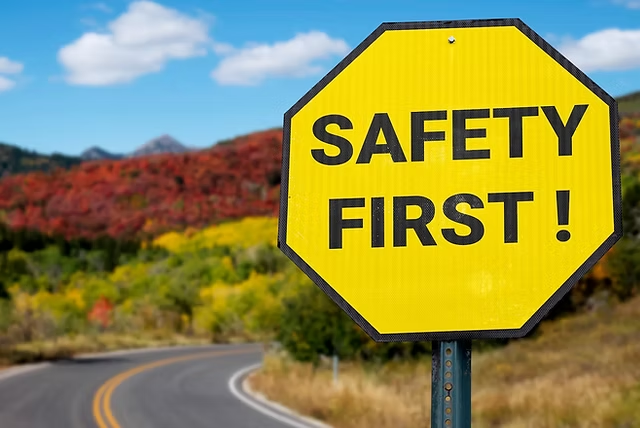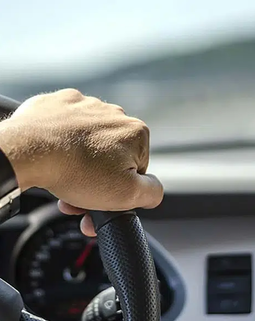A road trip can be an exciting adventure, but it's crucial to prioritize safety to ensure a smooth and enjoyable journey. This road trip safety guide provides essential tips covering vehicle preparation, safe driving practices, and what to do in case of emergencies.
1. Prepare Your Vehicle
Before you hit the road, make sure your car is in top condition:
-
Check Fluids: Check and top off all essential fluids: engine oil, coolant, brake fluid, power steering fluid, windshield washer fluid, and transmission fluid (if accessible).
-
Tire Pressure and Tread: Inspect your tires for proper inflation (check the sticker on the driver's side doorjamb or your owner's manual) and adequate tread depth. Consider rotating and balancing your tires.
-
Battery: Have your battery tested, especially if it's more than three years old. Clean the terminals if there's any corrosion.
-
Brakes: Ensure your brakes are in good working order. If you hear any squealing or grinding noises, have them inspected by a mechanic.
-
Lights: Check all lights (headlights, taillights, brake lights, turn signals) and replace any burned-out bulbs.
-
Wiper Blades: Make sure your wiper blades are in good condition and clear your windshield effectively.
-
Emergency Kit: Pack a well-stocked emergency kit (see details below).
-
Spare Tire: Ensure your spare tire is properly inflated and that you have the necessary tools (jack, lug wrench) to change a tire. Know how to change a tire before you need to.
-
HVAC System
2. Safe Driving Practices
-
Get Enough Rest: Avoid driving when tired. Get a good night's sleep before your trip and take regular breaks (every 2-3 hours) to stretch, walk around, and refresh yourself.
-
Share the Driving: If possible, share the driving responsibilities with another licensed driver.
-
Avoid Distractions: Put away your phone, avoid eating or drinking while driving, and minimize other distractions.
-
Maintain a Safe Following Distance: Use the "three-second rule" (or longer in adverse conditions) to maintain a safe following distance.
-
Adjust to Conditions: Reduce your speed in rain, snow, fog, or other challenging weather conditions.
-
Obey Traffic Laws: Follow all traffic laws, including speed limits, lane markings, and traffic signals.
-
Be Aware of Your Surroundings: Pay attention to other vehicles, pedestrians, cyclists, and potential hazards.
-
Plan Your Route: Plan your route in advance and be familiar with the roads you'll be taking. Use a GPS or navigation app, but don't rely solely on technology.
-
Take Breaks: Stop every few hours
3. Emergency Preparedness
-
Emergency Kit Contents:
-
Jumper cables
-
A flashlight (with extra batteries)
-
A first-aid kit
-
Reflective triangles or flares
-
A basic tool kit
-
Water and non-perishable snacks
-
A blanket
-
A fully charged power bank for your phone
-
A map (in case your GPS fails)
-
Gloves
-
A whistle (to signal for help)
-
-
Know What to Do in Case of a Breakdown: If your car breaks down, pull over to a safe location as far off the road as possible, activate your hazard lights, and call for roadside assistance. Stay in your vehicle with your seatbelt fastened unless it's unsafe to do so.
-
Share Your Itinerary: Let someone know your planned route, estimated arrival time, and contact information.
-
Carry Cash
4. Specific Considerations for Long Drives
-
Vary Your Speed: On long stretches of highway, slightly vary your speed to avoid "highway hypnosis" (a state of drowsiness caused by monotonous driving).
-
Stay Hydrated: Drink plenty of water to stay alert and avoid dehydration.
-
Listen to Your Body: If you feel tired, pull over and rest. Don't try to push through fatigue.
-
Check Weather Forecast
By following these road trip safety tips, you can significantly reduce your risk of accidents and breakdowns and ensure a safe and enjoyable journey. Remember, preparation and responsible driving are key to a successful road trip.
What are your essential road trip safety tips? Share them in the comments below!





